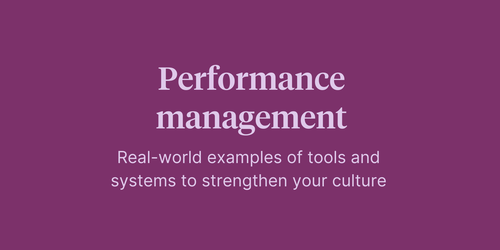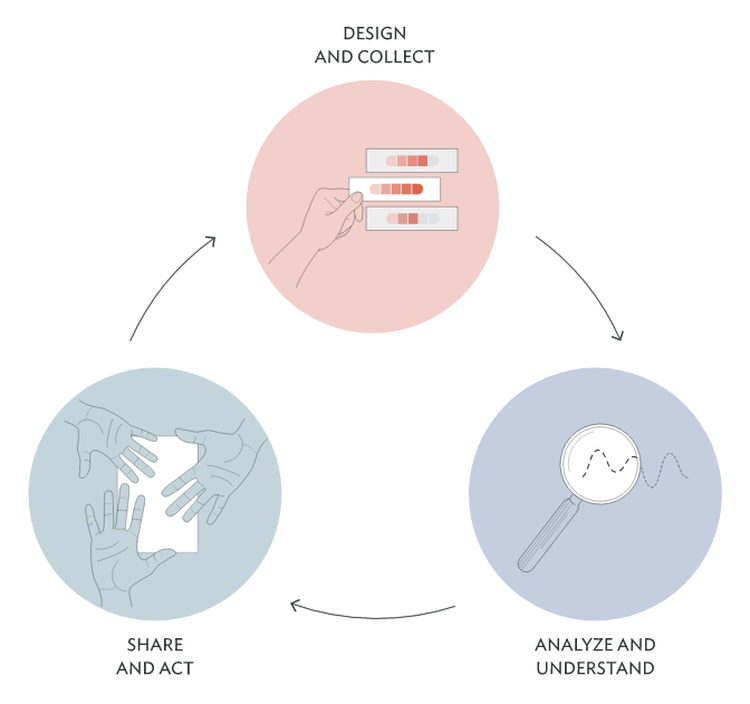
Article

Before joining Culture Amp as Chief Scientist, I was an academic and then a consultant. So I’ve looked at employee feedback professionally from a few different angles now.
Over the years, I’ve been fascinated by the way feedback processes have evolved, moving away from traditional, consultant-led models towards an internally-owned feedback loop.
This evolution has coincided with the growth of agile thinking and the reach of new technologies into all areas of organizations. The need for a more agile approach to feedback - one that can keep up with the needs of today’s organizations - has become inevitable. Together with my colleagues and our clients, we explored this idea in our recent ebook An agile approach to employee feedback: Why the world’s best organizations are taking people analytics into their own hands.
To me, an agile feedback process is responsive (though not necessarily instantaneous), promotes experimentation and validated learning, and creates a sense of trust and collaboration between HR and the wider business.
Here are my top four reasons for adopting a more agile feedback process.
Consultant-led feedback processes often involve a significant lag time between gathering feedback and receiving results. The data is crunched externally, going into the consultants’ closely-guarded black-box, with reports magically emerging weeks or even months later.
An agile process, on the other hand, remains in-house. The organization can ask for feedback and generate reports as soon they close the survey. They can get feedback to employees more quickly. But more importantly, they can focus more attention on taking action where it will have impact and then re-measuring to check how the changes are landing.

While it may sound counter-intuitive, this quicker, more frequent way of gathering feedback actually helps deal with the dreaded ‘survey fatigue’ because employees see and experience action being taken on the feedback. In contrast, the long lags in traditional processes stretch and even break the connection between feedback and action.
The days of deciding on one way to do things, implementing it and sitting back are over. Customer and employee expectations are fluid, external factors are more dynamic and the organizations winning the race have a competitive advantage because they are equipped to adapt quickly.
Agile feedback processes create a tighter feedback loop, which means more action, more often.
"Agile feedback processes create a tighter feedback loop" -
For organizations intent on continuing to improve, this is invaluable. Agile feedback allows organizations to experiment more with changes made in response to feedback. It’s about not being satisfied with ‘best practice’, which is inevitably superseded, but about ever-improving better practice.
Traditional feedback processes tend to adopt a top-down approach. Often it’s the consultants, rather than internal experts, who take the results to the CEO or board. But when the presentation is over, the consultants walk out the door leaving little internal ownership over the process, let alone the results.
An agile feedback approach turns this on its head. It builds ownership, not only because the process itself can be run in-house, but because results can immediately be put into the hands of leaders at all levels of the organization, from the CEO through to frontline managers. It gives teams across the business the chance to analyze their own results, see what they’re doing well and prioritize the changes that need to be made.
Finding the right cadence for gathering feedback is critical and can vary greatly depending on each organization’s needs. To let cost become the deciding factor risks devaluing the whole process, but unfortunately the expense of consultant-led processes has meant this has often been the case. An agile process isn’t held back by these same constraints, freeing the organization to gather feedback when they need it.
If being more agile is a priority for your organization, grab a copy of our free ebook, An agile approach to employee feedback: Why the world’s best organizations are taking people analytics into their own hands.